|
Porthcawl, south Wales
Small tourist resort on the south Wales coast
(Photos © urban75, September 2006)
Situated on the south coast between Cardiff and Swansea, Porthcawl is a popular destination for daytrippers, offering a sandy beachfront, a funfair and various attractions.
Modern Porthcawl came to prominence as a coal port, developed from two villages, the Norman hamlet of Newton and the older Nottage, a Viking settlement.
The town became a port for coal exports from 1825, but its growth was hampered by rough seas and gales.
A Nash lighthouse was constructed in 1832, with the dock owners, the Brogden family, building a harbour and inner dock in 1866.
The lighthouse had the honour of being the last coal and gas powered lighthouse in the country, finally switching to North Sea gas in 1974 and electricity in 1997.
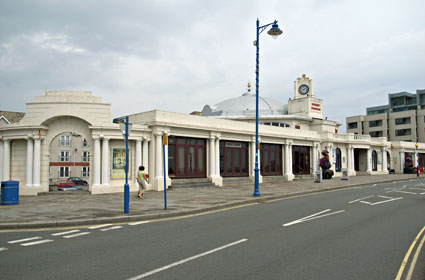
As the town grew and prospered, a promenade was built in 1887 to commemorate Queen Victoria's Jubilee, with Victorian and Edwardian villas populating the wide streets.
Despite the lighthouse and improved dock, the port's exposed position continued to put shipping at risk from sudden squalls, with the danger compounded by nearby sandbanks and the notorious Tuskar Rock.
The final blow to Porthcawl's docks came after the opening of Barry and Port Talbot docks, leaving the town to reinvent itself as a holiday resort.

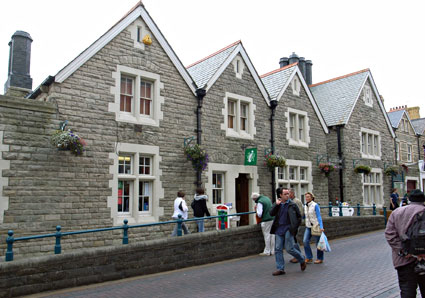
Old police station, now in use as a tourist information office and local museum.
Porthcawl resort
The (now defunct) branch railway line flourished between the wars, bringing holidaymakers to enjoy the bathing and boating lakes, roller-skating rinks, flying circus and paddle steamer daytrips across to resorts on the Devon and Somerset coasts.
After the Second World War, Porthcawl managed to survive the slump in tourism brought about by the package holiday boom, and remains a well visited resort in the the summer months, with Porthcawl Royal Golf Course and the surfing at Rest Bay bringing in new visitors.
As well as the nearby sandy beaches, current attractions include the 1930 Grand Pavilion, Coney Beach fun fair (based on Coney Island in New York City) and pleasure steamer cruises along the Bristol Channel and to Lundy Island.
The town also hosts two rather unusual events, the Christmas Day swim and an Elvis festival every September.

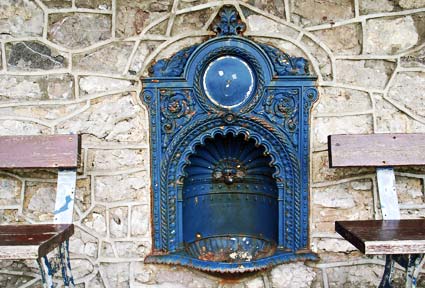
Ornate drinking fountain between rest Bay and Porthcawl.
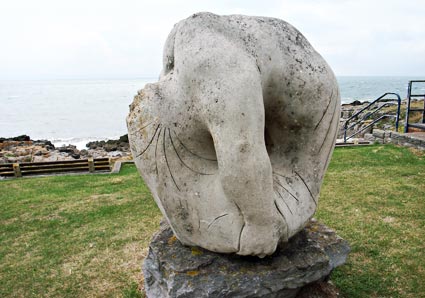
Designed to commemorate the town's sea faring history, this stone sculpture by Peter Nicholas was commissioned in 1993 and caused some controversy at the time with locals.
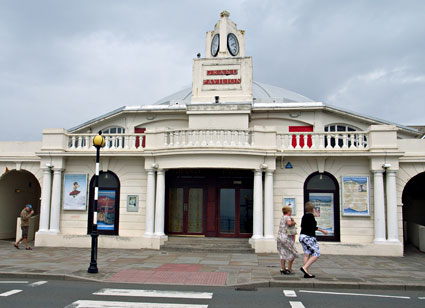
Built in 1932, The Grand Pavilion has a seating capacity of 643 and still hosts popular shows including an annual pantomime, one of the most popular in Wales.
Built as a dance and concert hall during the war years (my great uncle and aunt used to dance there), the Grand Pavilion is noted for once hosting a 'live' performance with the singer, actor and civil rights activist Paul Robeson over a trans-atlantic telephone link.

The Pavilion boasts a classic thirties facade with a distinctive octagonal dome.

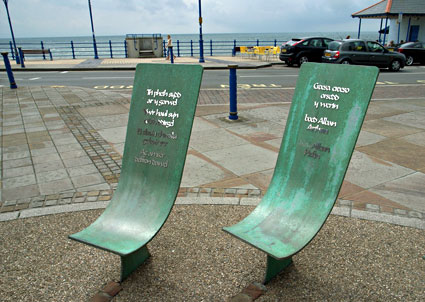
Seat/sculpture type thing facing the sea front.
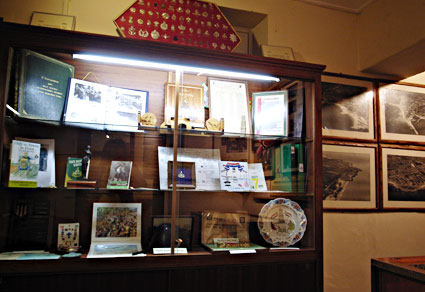
Inside Porthcawl's small museum - it's well worth a look!
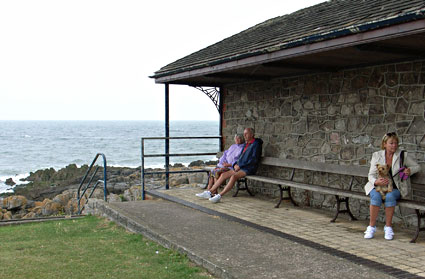
Sheltering from the rain.
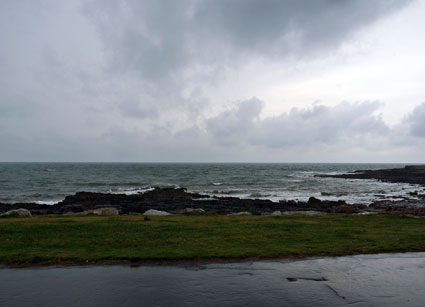
As we left, we were hit by classic Welsh holiday weather!
« back to Wales photo homepage Rest Bay, Porthcawl »
|
|

